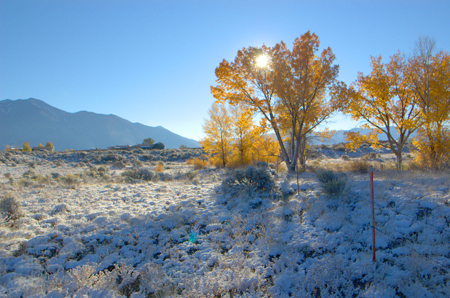Directional Light: Reveal & Obscure
![]()
Directional Light: Reveal & Obscure
By George Schaub
Think of how stage lighting adds to the drama of the scene or how a painting by Rembrandt or Vermeer uses light in ways that draw the eye into and through the frame. In every visual and many performing arts the use of bright and dark values play an important role. In photography, the play of light creates the illusion of volume, defines space and forms and can even tell us about the season, the weather and time of day the picture was made. Photography, which literally means "writing with light", uses light to reveal, but at times to also obscure detail for the benefit of the visual impact of the scene.
While painters have the advantage of being able to craft any light they want, and to often open shadows beyond the recording range of any camera, photographers not working in a studio have to work with "found" light, that which exists in the scene. True, the use of software, HDR imaging and, for film shooters, advanced darkroom work can bring a wider range of values to a print. Ultimately, however, the medium defines the range of light that can be recorded. Rather than always fight against this limitation, dramatic images can result from exploiting both the "found" light and those limitations.
One way to increase your chances of creating something special with the interplay of bright light and shadow is to seek images having "directional" light and to expose them in a way that exploits and even enhances the contrast differences.

This photo was made in late afternoon in a boatyard in Maine. The light was
streaking across the ground and struck a colorful hull in the background and
one of the supports of the boat in the foreground. Metering for the bright background
and letting the shadow areas go dark exploited the shadow/highlight interplay.
You might rightly say that all light is directional in that it comes from a source and reflects off a subject. In photography, directional light is often defined as coming from a fairly acute angle--when the sun is close to the horizon or when it peers through an obstruction, such as when it glints through a canopy of trees overhead to illuminate a small portion of the frame. For me, this is very fruitful lighting and it's why photographers are often most active at dawn or dusk.

The heavy canopy of trees overhead on a sunny day blocked most of the light, save this "spotlight" that shone through to illuminate these swamp plants. Careful spot metering off the plants brought the highlight "down" toward a middle gray value and drove down the darker values into deep shadow.
Tied in with seeking this light is exposure technique that creates the desired effect. These scenes start out as fairly high in contrast--something you want to enhance. The easiest method is using spot metering and placing the spot on the bright value and locking that exposure before you reframe. This works great if the bright area contains color, as it will saturate and intensify that color. If the bright area is white you might need to add + 0.5 or even +1 EV in exposure compensation to avoid making that white area becoming pale gray.

The late day sun created a play of light and shadow on this colorful clothing at a powwow in New Mexico. Spot metering the brightest area of white, and adding +0.5 EV, insured an interplay of light and shadow while retaining the bright tones in the silvery cloth.
While you might have relied on multi-pattern (matrix, evaluative) metering patterns in the past, spot metering and having more complete control over the tonal values in the scene is the way to go with directional light. Seeing directional light and making the translation to an image for the best effect is something you master with practice. After all, our eyes do not see that way. This interpretation, rather than recording, of light and shadow, and the colors they contain, will reap exciting visual rewards.

The sun was fairly low in the sky and cast a long shadow across this snowy plain.
Blokcing the direct rays with the tree in the mid-ground, I metered to the left
(the brighter areas), locked exposure and then recomposed to create deeper shadows
and saturated bright values.
- Log in or register to post comments












































